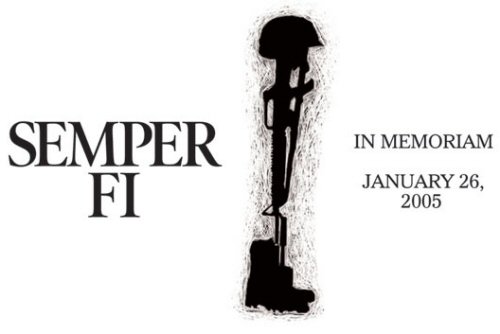The Mistakes in Iraq
I've said it before, and with the present administration in Washington I may be saying it a lot in the future, if your policy fails, never try to weasel out of taking responsibility for it (i.e., a failed policy) by saying no one could have foreseen the outcome at the time the decision was made.
Why? Because there will be people who did, in fact, foresee the outcome. For example, I've talked before about former U.S. Army General Eric Shinseki (disclosure: he is from Hawai'i). In a devastating article by Frank Gibney, President of the Pacific Basin Institute, Gibney notes General Shinseki's thoughts on, among other things, the number of troops that are required in Iraq, the limits of those forces, the difference between acquiring territory and holding said territory, multi versus unilateralism, and what the General calls complicators (outside, forces that can cause you to divert your own forces). Below is a mirror of Gibney's article so that it will remain in the public eye rather than disappear behind an advertising vault's door.
When Donald H. Rumsfeld swooped down on the Pentagon in 2001 as President Bush's secretary of Defense, Gen. Eric Shinseki must have looked like a natural ally to him. Like Rumsfeld, Shinseki wanted to "transform" the armed services and had announced his plan for changing the Army when he became chief of staff in 1999.
But Shinseki's notion of transformation differed substantially from Rumsfeld's. To the new Defense secretary, transformation meant greater reliance on technology, not troops, to achieve goals; to Shinseki, it meant more intensified training, featuring highly mobile medium-light brigades of mechanized infantry capable of a variety of missions.
Their philosophical clash became public when the United States went to war against Iraq. The preemptive attack relied on overwhelming air power and deployed a bare minimum of ground troops. Asked by a Senate committee to estimate the number of troops needed for the operation, Shinseki said "several hundred thousand." Rumsfeld's office immediately denounced the number as "wildly off the mark." But the disastrous experience in postwar Iraq has proved the general right: Security remains elusive because the numbers of U.S. and coalition forces on the ground are inadequate.
Since his retirement in June 2003, Shinseki has restricted his public appearances to foreign policy and university audiences. Early this month at Pomona College, he outlined his policy for a post-Cold War Army equipped to deal with a multitude of duties.
Here are some excerpts:
• The Army's job: "During the 1990s, we used the Army for many nontraditional tasks — humanitarian assistance, disaster relief, wildfire control and peacekeeping, among others — but the Army's nonnegotiable contract with the American people is to fight and win wars. We grow our own leadership — thorough troop training is our most vital mission — but we need about 180,000 new people each year, so recruiting is a vital task. For a professional Army, it must not slip."
• The limits of force: "In my time in uniform, the use of force was often not the preferred solution; neither was it necessarily the first option considered…. Once the use of force is sanctioned, there's almost no turning back…. Lethal force involves blunt trauma and surgical strikes, [which] better describe a military planner's range of options than they do the effects produced on the ground…. We can pinpoint targets with total accuracy … as long as they don't move."
• Military occupation: "If your forces are in Baghdad, you own it. And that means you own the water, the electricity, the public buildings — and public order. If the task is to create a secure environment, troops on the ground are needed."
• Multilateralism: "Unilateralism as a stated policy is bad. The U.N. and this country have had our differences, but we need its cooperation and support."
• Crisis management: "I was personally involved … in dealing with explosive crises in East Timor and Bosnia. The U.S. needed to help get Indonesia right and to link whatever happened in Indonesia to a comprehensive long-term strategy for the region. In Bosnia, the effort at peacekeeping took a long time, but after nine years the forces needed there greatly diminished — from 20,000 to 8,500. How long would it take to stabilize Iraq?"
• Threats and complicators: "In the Bush administration's first appraisal of defense needs, reference was made to 'asymmetric threats transcending geography.' Little was said about the kinds of 'complicators' that those of us who lived abroad in the 1990s were watching. These complicators — the best term we could find at the time — included transnational criminal organizations, international narco-trafficking, the surge in terrorist incidents involving Muslim extremists and the suspicion of ongoing proliferation of weapons-of-mass-destruction technology. The nagging question for which the Army had no answers was, 'What happens if the four complicators merge into a larger transnational threat? Whose responsibility will it be to deal with that kind of danger?' "
• Force levels. "We need to have enough forces on the ground to deter and hold crises where they are. You can't fall into the trap of organizing for specific missions and then being unable to perform other missions when the conditions change very quickly — and in places like Kosovo, they can change in 20 minutes. You may find yourself having to go very quickly, intellectually and physically, from what was a peacekeeping mission to fighting a war — and preparing the troops for this [shift]. And with the missions multiplying, you cannot go on fighting a 12-division war with only 10 divisions available."
What puzzled many of us who had listened to Shinseki was the contrast between his emphasis on careful military planning and how shortsighted the administration was in preparing for the invasion of Iraq and its aftermath. Before the war, Shinseki's Army planners were not once consulted by Rumsfeld's office. The State Department's planning proposal for postwar Iraq was similarly ignored by the administration.
It was a case of an outside group of civilian neoconservatives moving into the Pentagon and arrogantly taking over the military. Heedless of any advice to the contrary, Rumsfeld's "shock and awe" attack gained an apparent quick victory at the cost of postwar policy. Some 20 months after the fall of Baghdad, Iraq remains in pieces, with anti-American fervor strong and our military victory tarnished by a stubborn insurgency and the needless brutalities at Guantanamo Bay and Abu Ghraib.
If this is what Rumsfeld's idea of "transformation" has brought us, it's a pity we didn't try Shinseki's.
So what did General Shinseki get for being right? He was
fired forced to retire by Secretary Rumsfeld. While it
might be somewhat presumptuous to say US troops are dying
because of the Bush/Rumsfeld administration's failed policy,
it wouldn't be far off the mark.
Aloha!





